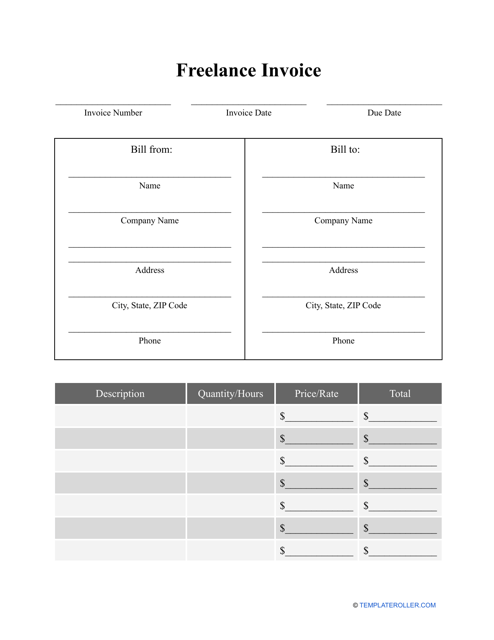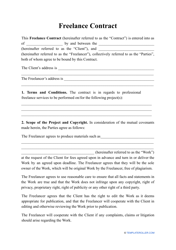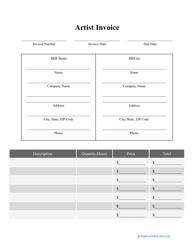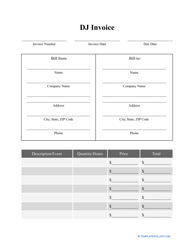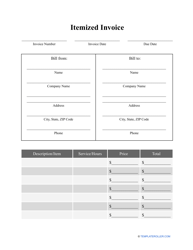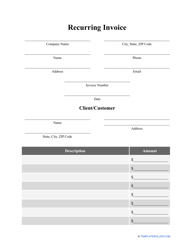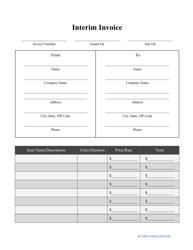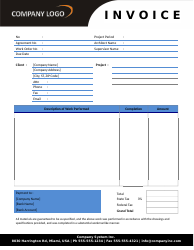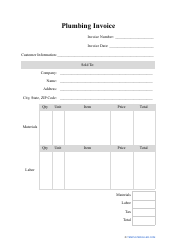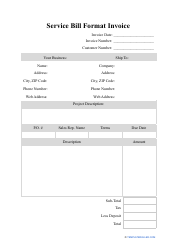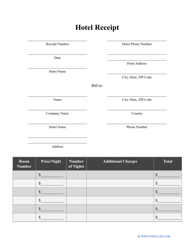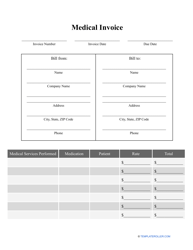Freelance Invoice Template
What Is a Freelance Invoice?
A Freelance Invoice is required for individuals wishing to receive compensation for their completed work or service. Naturally, any freelancer would expect to receive payment from the client for carrying out agreed work. Sending invoices is not as straightforward as just sending clients your payment details in a quick email. The invoice you have will reflect the professional nature of you as an individual. If freelancers desire to come across as a serious business, then they need to be sure that their invoices are of a high and professional standard. This document also allows you to keep track of finances and see which client has paid you and which clients are yet to pay. After all, when working as a freelancer, only the freelancer is responsible for chasing up any missed or late payments.
The key components to a Freelance Invoice include details about the carried out jobs and the compensation you expect for carrying out this task. The overall sum should also be included as well as the deadline date for payments. The organization of the invoice will vary depending on the services you offer.
A Freelance Invoice template can be downloaded by clicking the link below.
How to Invoice Freelance Work?
If you want to know how to Invoice for Freelance Work correctly, you should refer to our previous post How to Invoice for Freelance Work? which you can access by clicking the link to find out more information.
Ensure that when invoicing, you provide the client with your contact details (should they have any queries) followed by an invoice number, date of invoice, deadline date, detailed explanation of the work, method of payment along with the sum(s) for all work. Usually, these are sent as an email as an attachment for the client along with the invoice number as the subject or sent via post.
How to Write an Invoice for Freelance Work?
To create an Invoice for Freelance Work you need to first make sure that the details regarding your work have been finalized. This usually takes some time and messaging between the freelancer and a potential client. It is extremely important to discuss all the small details and include these in the invoice to avoid potential disputes in the future.
A simple freelance invoice should include the following points:
-
An appropriate title . The title is the first thing a client will see, therefore it is crucial to make sure that it is labeled appropriately so that a client can look at the document and understand straight away what is before them.
-
Company details . This should of course include not only basic contact details (in case of urgent contact) but also the company name and logo. Not all freelancers use logos, but this is something to consider if you want to show professionalism.
-
Information regarding the client . Their full name and contact details should be included in this section.
-
The date of the invoice . This is particularly important because some freelancers opt to have the deadline date a certain number of days after the date of issue.
-
Unique identification number . All invoices should be allocated a unique number in order to keep payments organized and keep track of what has been paid. In case a client loses their invoice, it will be easier for you to find and send out another copy.
-
Detailed explanation of the work or service provided to the client . The more detail that is provided here, the better. It should clearly show the client what work they are being invoiced for and this will prevent any ambiguity or misunderstandings with the client. The rate can also be included in this section, with the option to include pre and post-tax sums. If your client has put in a deposit, it can be deducted in this section.
-
After you have outlined all the individual sums, you should include the total sum along with details regarding payment . Payment details should take into account the various accepted methods of payment and the deadline date for which the client must make the full payment.
-
Sign and send.
Haven't found the template you're looking for? Take a look at the related templates below:
